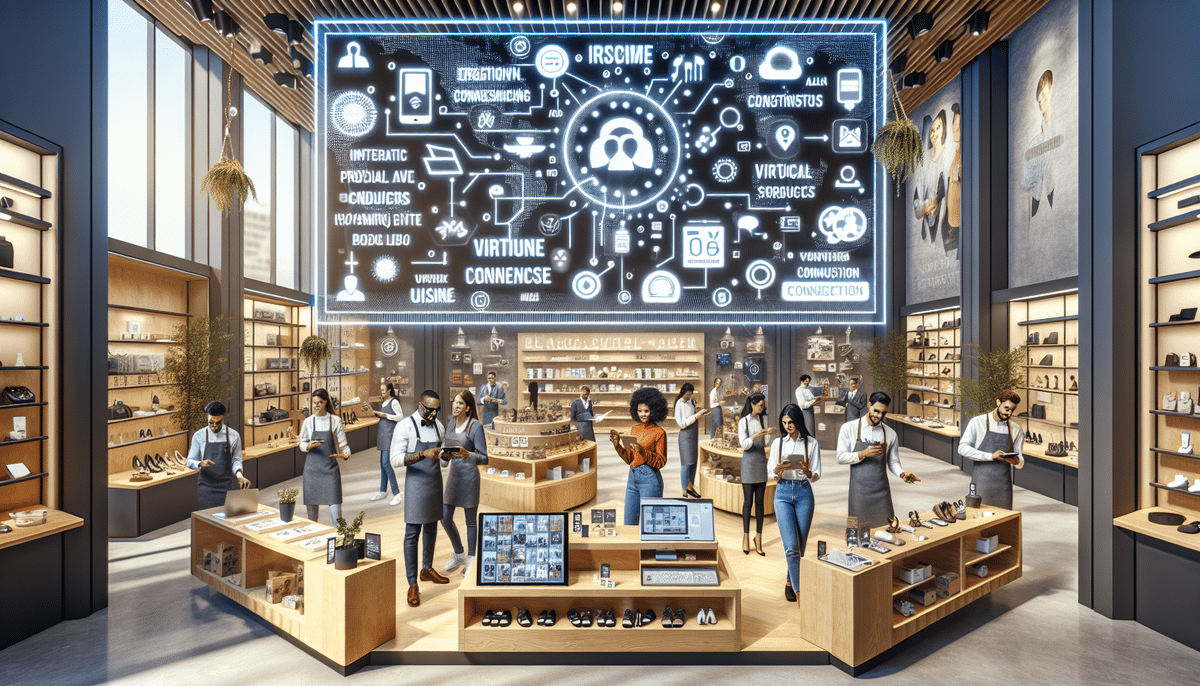The Benefits of Omnichannel Retail for Businesses
As technology advances, consumers are increasingly shopping through multiple channels. From in-store purchasing to online shopping and social media platforms, customers demand a seamless and personalized shopping experience regardless of where they shop. This is where the concept of omnichannel retail comes into play. An effective omnichannel strategy can improve customer loyalty, increase sales, and provide a competitive edge for businesses. Here, we explore the benefits of omnichannel retail for businesses looking to attract and retain customers in a rapidly evolving industry.
Understanding Omnichannel Retail
What is Omnichannel Retail?
Omnichannel retail refers to the integration of all retail channels, including e-commerce, social media, mobile, and traditional brick-and-mortar stores. The goal is to provide customers with a consistent and seamless shopping experience regardless of where they shop. This approach prioritizes customer needs, ensuring they have access to the information, products, and services they require when they need them.
The Evolution of Omnichannel Retail
The concept of omnichannel retail has evolved significantly over the past decade, driven by technological advancements and shifting consumer behaviors. The rise of mobile devices, for example, has enabled consumers to shop from anywhere at any time, blurring the lines between online and offline shopping experiences. According to a Statista report, global retail e-commerce sales are projected to reach $6.54 trillion by 2023, highlighting the importance of integrating multiple channels to capture this market.
Key Benefits of Omnichannel Retail
Enhanced Customer Loyalty
Omnichannel strategies foster stronger customer relationships by providing a personalized and consistent experience across all touchpoints. Personalized interactions based on customer data can significantly increase satisfaction and loyalty. For instance, a study by Salesforce found that 70% of consumers say connected processes are very important to winning their business.
Increased Sales and Revenue
By leveraging multiple channels, retailers can reach a broader audience and create more opportunities for sales. Omnichannel customers typically spend more than single-channel customers. According to a Shopify report, omnichannel shoppers have a 30% higher lifetime value.
Wider Audience Reach
Offering multiple shopping channels allows businesses to tap into diverse customer segments. Whether customers prefer shopping online, via mobile, or in-store, an omnichannel approach ensures that businesses can cater to varying preferences, thereby expanding their market reach.
Implementing an Effective Omnichannel Strategy
Identifying Key Channels
To implement an effective omnichannel strategy, businesses must first identify the channels most frequented by their customers. This involves analyzing customer data to understand preferences and behaviors. Tools like Google Analytics and customer relationship management (CRM) systems can provide valuable insights.
Ensuring Consistency Across Channels
Consistency is crucial in delivering a seamless experience. This includes uniform branding, messaging, and product information across all platforms. Inconsistent experiences can lead to customer frustration and decreased loyalty.
Integrating Technology and Systems
Technological integration is the backbone of omnichannel retail. Utilizing a robust e-commerce platform, mobile applications, and in-store technologies like POS systems ensures smooth data flow and operational efficiency.
Leveraging Data and Analytics
Collecting and analyzing customer data across all channels enables businesses to personalize the shopping experience. Data-driven insights can inform marketing strategies, inventory management, and customer service improvements.
Overcoming Challenges in Omnichannel Retail
Data Integration and Management
One of the primary challenges is integrating data from various channels to create a unified customer view. Implementing advanced data management systems and ensuring data accuracy are essential steps in overcoming this hurdle.
Maintaining Consistent Branding
Ensuring consistent branding across multiple channels requires coordinated efforts across all departments. Regular audits and unified brand guidelines can help maintain consistency.
Resource Allocation
Developing and maintaining an omnichannel strategy can be resource-intensive. Businesses must allocate sufficient budget and personnel to support the necessary technological and operational demands.
Future Trends in Omnichannel Retail
Personalization Through AI and Machine Learning
Artificial intelligence and machine learning are set to revolutionize personalization in retail. These technologies can analyze vast amounts of data to deliver highly tailored shopping experiences. According to a Forbes article, AI-driven personalization can boost conversion rates by up to 20%.
Integration of Emerging Technologies
Technologies like augmented reality (AR), virtual reality (VR), and the Internet of Things (IoT) are enhancing the omnichannel experience. For example, AR can allow customers to virtually try products before purchasing, bridging the gap between online and in-store shopping.
Sustainability and Ethical Practices
Consumers are increasingly prioritizing sustainability and ethical practices. Omnichannel strategies that incorporate eco-friendly practices and transparent supply chains are likely to resonate more with modern consumers.
Case Studies: Successful Omnichannel Strategies
Nordstrom
Nordstrom has excelled in implementing an omnichannel strategy by integrating their physical stores with their online presence. Customers can browse products online, purchase them via mobile apps, and opt for in-store pickup or returns. This flexibility has enhanced the customer experience and boosted sales across all channels.
Sephora
Sephora leverages augmented reality through its "Virtual Artist" feature, allowing customers to try on makeup virtually. This integration of technology into the shopping experience has increased customer engagement and satisfaction.
Conclusion
As customer behavior and technology continue to evolve, retailers must adapt to meet changing demands for a seamless and personalized shopping experience. An omnichannel approach can help businesses drive sales, increase customer satisfaction and loyalty, and provide a competitive advantage. To reap the benefits of an effective omnichannel strategy, businesses must:
- Adopt a customer-centric approach.
- Leverage data and technology effectively.
- Align marketing messages, branding, and technology across all channels.
By embracing these principles, businesses can navigate the complexities of modern retail and achieve sustained success.






















